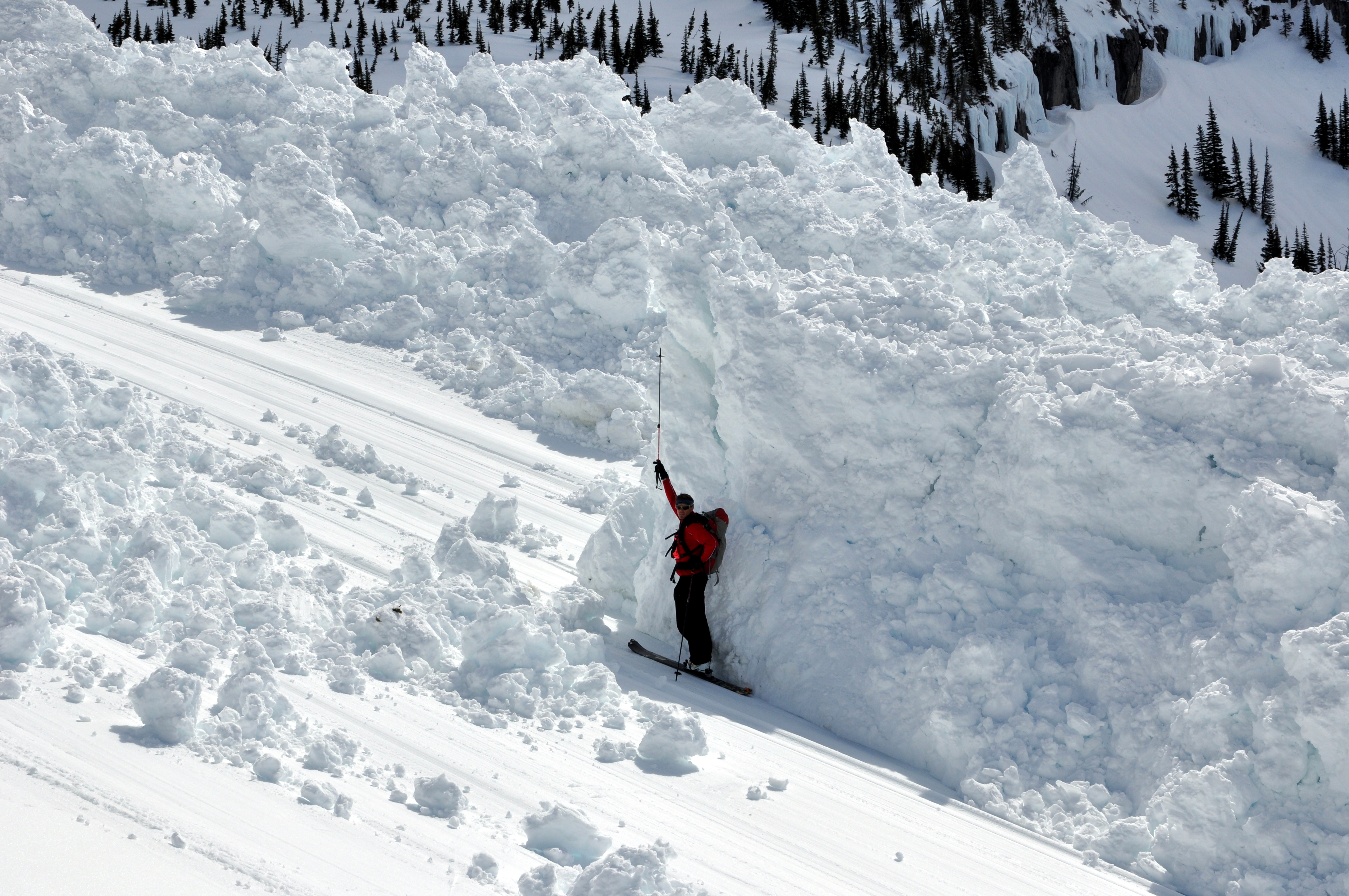Avalanches and Climate Change in Glacier National Park
 In the high reaches of Glacier National Park, the captivating beauty of the mountains holds a powerful wintertime phenomenon: snow avalanches.
In the high reaches of Glacier National Park, the captivating beauty of the mountains holds a powerful wintertime phenomenon: snow avalanches.
Avalanches are often dramatized as extremely dangerous, freak events, but they are a natural part of the Glacier National Park ecosystem. U.S. Geological Survey (USGS) research ecologist Dan Fagre and his colleagues are responsible for recording and researching the predictors of avalanche release in the park, all under the umbrella of the Climate Change and Mountain Ecosystems (CCME) Program.
There are 48 active avalanche paths along Going to the Sun Road, the main route visitors take when driving through Glacier National Park. Scientific analysis shows that at upper levels, each avalanche path is likely to release every two to four years.
“The really big ones that rip all the way down to the bottom and would knock a train off the tracks or cause real damage are about one every decade,” Fagre said.
Small avalanches are more frequent, but their frequency is complicated by the fact that some winters are more active than others.
The impacts of avalanches in the park are wide-reaching: seasonal avalanches directly affect the behavior of grizzly bears, for example. Avalanche chutes provide ideal foraging areas for bears.
“You have that low shrubby vegetation; a lot of herbaceous plant cover that is highly nutritious for all kinds of things—bears and birds and bees are all using these avalanche chutes. So this is keeping biodiversity at a higher level than would otherwise occur and maintains habitat heterogeneity,” Fagre said.
Avalanches are known to cause animal mortality, but have bigger effects on the ecosystem at large, including aquatic systems.
“They bring a huge amount of debris down into a streambed, changing all of the dissolved organic carbon and the dissolved organic nitrogen,” Fagre explained. “Then the trees, when they pile in the streambed, can create more shaded habitat for trout, or alternatively, depending on how the snow avalanche piles up and changes the stream course, you might lose some, too.”
The effects of snow avalanches are similar to the ways forest fires reshape the mountain ecosystem, Fagre said. “And that’s not even considering the role of snow as a hydrologic reserve, in terms of water supply.”
In areas where debris has piled up, it can take the snow up to three years to melt. This is extremely compressed snow, which can be as deep as 40 or 50 feet. “All the woody debris on top of it helps insulate it,” Fagre explained.
In addition to these direct ecological effects, avalanches also have a unique interaction with fire.
“Snow avalanche paths are fuel breaks,” he said. “They affect how fires move across the landscape. So you have this interaction between snow and fire that a lot of people don’t think about.”
As the planet warms, researchers are concerned about a future time when there are no snow avalanches, Fagre said.
“That’s very likely just because the average snow line is going up,” he explained. “We have 2-3 weeks of less snow on the ground at any particular point. There have been many snow survey sites that were started in the last century—some of them don’t have snow anymore.”
In October 2020, Fernie, B.C. will host the International Snow Science Workshop (ISSW). Snow and avalanche specialists around the world will gather to exchange interdisciplinary ideas and experiences.
“It’s international, but it’s in our neighborhood,” Fagre said. As CCME continues to gather important data about snow avalanches in Glacier National Park, it will be exciting for the team to have a seat at this global table of mountain experts, convened just over the border in their own backyard.
“Snow avalanches are much more important than whether it’s a hazard to a skier or whether it means that Going to the Sun Road can’t open up a couple weeks earlier,” Fagre said.
By Jackie Bussjaeger
This is Montana Editor
Photo: A member of the USGS CCME team puts avalanche debris in Glacier National Park into perspective. Photo courtesy of Dan Fagre.
